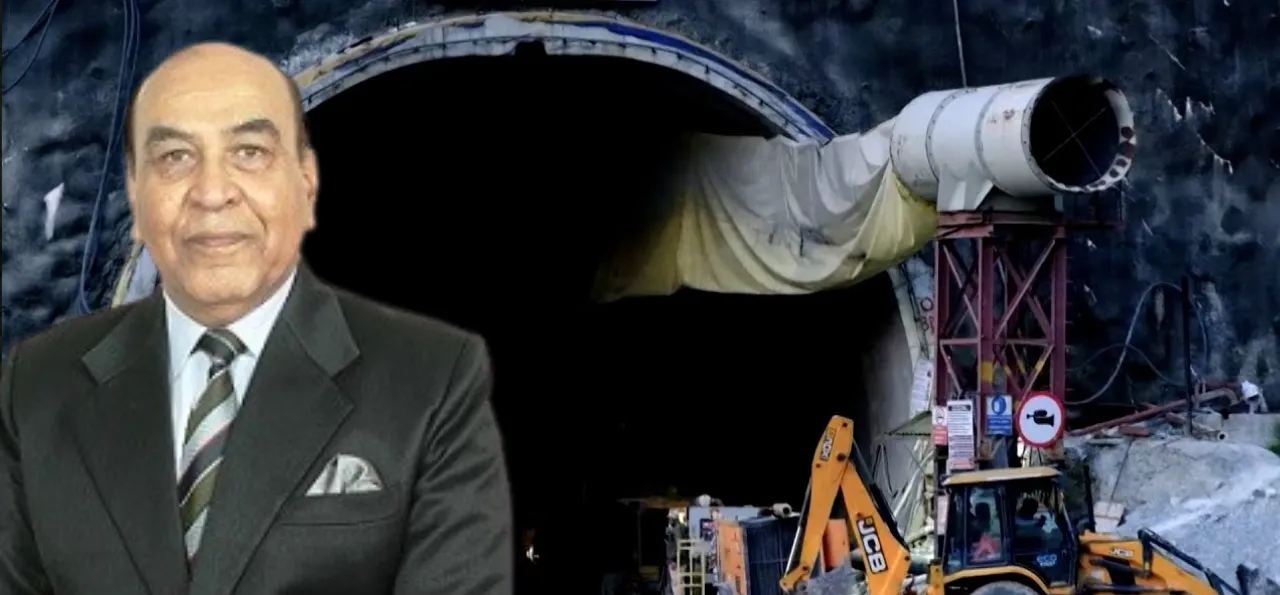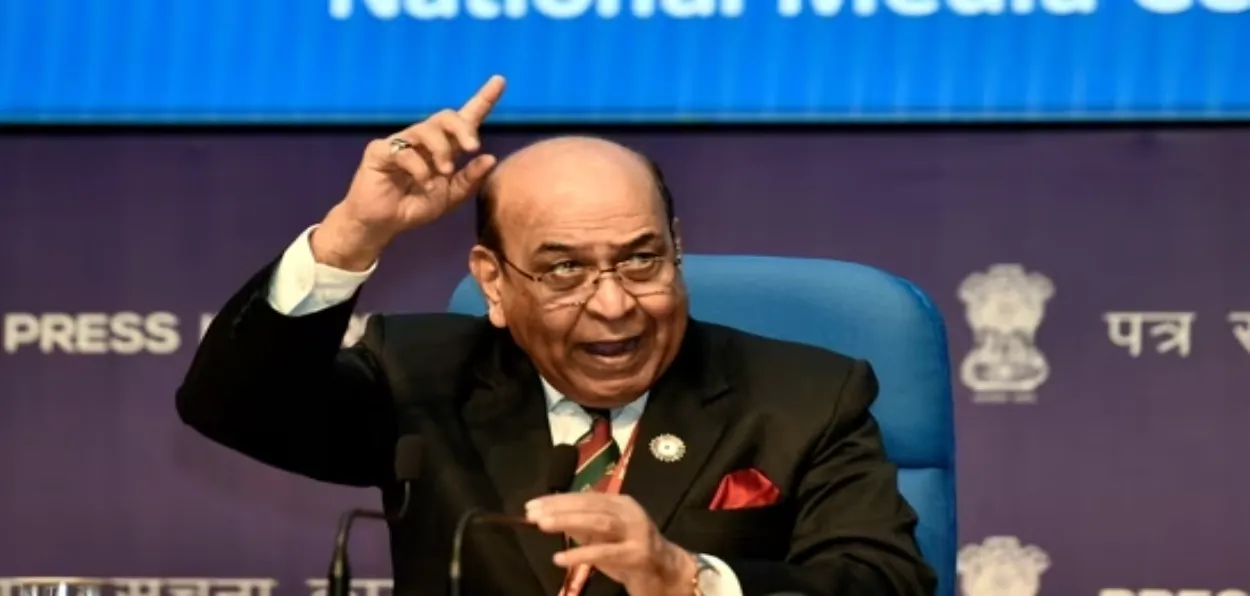
Atir Khan/New Delhi
The ordeal of workers trapped inside the Silkyara tunnel in Uttarakhand, ended after 16 days and with 400 hours of superb teamwork by rescuers. The operation was a perfect example of Indian resilience; ademonstrated how we as one people can can move mountains. Lieutenant General (retd) Syed Ata Husnain, a member of the National Disaster Management Authority NDMA, one of the main agencies leading the rescue operation, shares his experiences of the operation. Atir Khan, Editor-in-chief, Awaz-the voice spoke with Gen Syed Ata Hasnain the next day of the successful operation. Excerpts of the interview:
Sir, being a member of NDMA, a successful rescue operation must have been quite a relief and a matter of great satisfaction for you.
Lt Gen Hasnain: No doubt that this was an operation of its kind. Absolutely. But I would complement the mission, the complete mission for this, and the fact that it was driven by the Prime Minister himself, the Prime Minister's Office, the Ministry of Road Transport and Highways, the Ministry of Home Affairs, and then India, me and the others, the Indian Army and the Indian Air Force and various other infrastructure agencies.
I mean, so many agencies came forward; the foreign experts who were brought on board. And finally, at the end of the day, at the lowest level to do the work, the rat hole miners. So, this is an all-India effort. I think this kind of thing has never been achieved.
It's amazing. Sir, you were performing a very important role passing on detailed information about the rescue operation. Communication in a rescue operation plays a major role. What was going through your mind when you were briefing the country?
Lt Gen Hasnain: This is a very relevant question. In India, usually people do not ask this question. But slowly I'm very happy that this realization is coming about in India that in any challenging situation, whether it be of war, whether it be an accident, whether it be a disaster of any kind, public information is an extremely important entity. It keeps the public enthused to keep them well-informed of the truth, transparently in the truth, keeps the confidence going, and does not create any unnecessary expectations.

Lt Gen (retd) Syed Ata Hasnain briefing media in New Delhi
We tried our best to make sure that we gave confidence to the nation to still know that this is not the only method that we are using for the goal. And why make this up almost a war zone We have looked at every single option that we are looking at you examining. So, if one option fails, many more than other options will open up.
So, it's for this kind of process of a transparent information exchange that's taking place. That confidence building was being carried out with the population..and does not put undue pressure on those agencies that are involved in the work n this particular case. Also, more pressure on the relatives who were camping there, and many of them aware and were well-informed. So, the task of bringing this information with all the necessary technical details, et cetera, and the confidence building was being performed by India.
And I dare say if we had our linkages with everything that was happening on the spot; we had our linkages with all the ministries, we had our linkages with the PMO and we were alive to all the decision making which was taking place, the challenges which were coming up from time to time, particularly at the time when for example, the auger machine broke down..such kind of disappointment, which would have perhaps gone ahead at that time.
This operation is a fresh case study where all Indians, irrespective of caste or religion came together for a cause.
You have led teams before last teams in the Indian Army but how was this experience of being a part of such a team in recent times?
Lt Gen Hasnain: One of the things was very clear.. my previous experience of 40 years was in the Army. Yes. In a place like Kashmir, we had lots of multiple agencies working together with the uniformed forces. We had intelligence agencies; we had the local public and the population. So, I was personally quite used to it. Right. But this business of government coming together.. different organizations within the government, at least 25 organizations that are working here for us coming on board. Consultation... Open to everyone. Yes. I went back to open the lines. My own way was jammed. I was getting a message every 10 seconds. People were offering me services free of cost. It was India at its best. I've never seen India like this. India at its best! Everyone was praying for those 41 people in the name of God.
Everyone was praying, right? And no one looked at the caste, creed, or religion. But everyone just joined together and carried out this effort. Of course, it was led right from the top by the Honorable Prime Minister. You may want to make sure that three, four, five, or six times a day he was taking feedback and giving instructions even though he was on the road many times.
The Prime Minister's secretary, Dr. Mishra, was personally involved in this, analyzing it himself and with the staff, and then passing directions, speaking to the workers there, giving them the necessary confidence boost, which was to get the while giving a boost to all the working agencies with it. I think I don't know if I have mentioned everyone, but there are still many, many people more to acknowledge. But then ultimately it was all of India. So, we have to acknowledge the whole of India.
Sir, you talked about the PM's hands-on approach. PM Modi's approach to the rescue and his personal interest was truly remarkable. But tell us, how was it effective in boosting the morale of the team members and that of the trapped workers?
Lt Gen Hasnain: There's no doubt about it. You see, it was becoming very evident that there were enough people going to the spot. Mr. Nitin Gadkari, Mr. Pushkar Singh Dhami, and Gen V K Singh all were involved in the operation. I mean, it was back to war and the escaping that there were lots of people who had clambered on board what made the services available.
When the Prime Minister himself was intervening obviously the morale of the people was high, of those trapped inside, their relatives. That’s why the operation culminated in 17 days my estimate it could have gone on for 45 days or even 50 days. We had different options which would have taken that long I think the workers would have the survivability, the ability to hold.
Sir we are curious to know how decisions were being taken when so many teams were involved. How was the decision-making happening? I mean with every step there must be a lot of consultation, isn't it?
Lt Gen Hasnain: There was tremendous consultation on the ground which was taking place. No one was interfering with the technical agencies. Though all the other agencies had their representatives there. Even top officials from the Prime Minister's Office were present there. So, they were the link that was available for any passage of information that required a decision from the PMO.
The technical inputs were all coming in and the decision was being taken appropriately. Now then I had lots of discussions which inevitably happened post-event that the miners should have been sent in earlier. The right coal miners would probably have been able to achieve this in an earlier timeframe, et cetera.
Uttarakhand Chief Minister Pushkar Singh Dhami welcoming a rescued worker
Praying for the success of the rescue operation goes on to show that the teamwork of Indians could meet any challenge. What are your thoughts?
Lt Gen Hasnain: The first part of your statement? I will go along with you. But there was no religious identity there. There was no ID and no one was carrying the color of his faith or the flag of his faith in any way or displaying it. We were all performing our tasks. Even an expert from Australia was seen prostrating there. So, I was reminded immediately that when I was climbing up the Siachenglacier, we also had a similar thing. We had a cave and we had a Baba, whose feet every man in the unit who went up touched, irrespective of whether they were Muslim or Christian. Intervention by the divine is a very important belief in India. You've got a natural propensity to look for divine intervention. And that's what we look up to. It matters which religion, of which faith or which gotra, which creed you belong to. That's the spirit with which we have functioned in the armed forces, always. That's the spirit with which I think the rest of India also functions mostly, except maybe an aberration or two.
Lt Gen Husnain: Actually, the Honorable Prime Minister, Mr. Modi, has established a very high benchmark, which is on this issue of intervention and saving of lives globally. I mean, what a huge operation it was to bring back people from all over the world during the Covid pandemic. So, this benchmark that has been created will have to persist, will have to persist with and it's become a part of what I see, as a part of an existential doctrine. It's an unsaid doctrine. If there is a problem somewhere and there are Indians stuck there, it is the duty of the government of India and it would move everything, every resource possible to make sure that they get this back right.
Even the resilience of the trapped workers was remarkable. Isn ‘t it?
Lt Gen Hasnain: You see the forbearance, the resilience, as you very correctly said. Their requirements are very little. If you go up to high altitude areas and see some of the labour, which is working on the border roads, the roads being constructed by the Border Roads Organisation, they live ordinarily.
There's nothing available to them. They have children with them and their wives are working with them on the same roads. When we saw the faces of people rescued, they looked so happy. The fact of the chief minister standing there, there are all kinds of people giving them things to eat. It was a golden moment, the golden moment of India. We saved the people who had no links with anyone at all. All of India came together to pray, the whole of India came together to rescue them. That just shows how India has changed over the years to rise.
